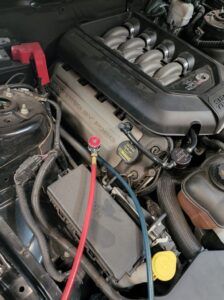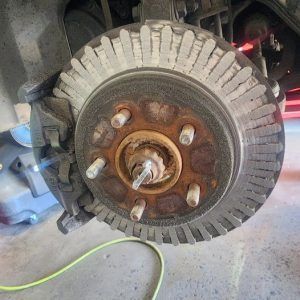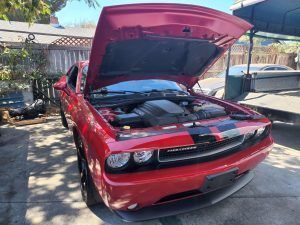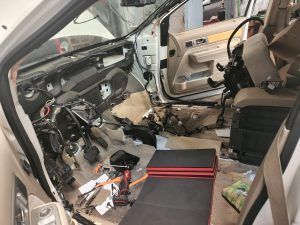Expert Guide: How To Identify And Repair Car AC Problems
Are you tired of sweltering in your car during those hot summer months? Is your car’s AC system not working as efficiently as it used to? Don’t worry, because this expert guide is here to help you identify and repair any car AC problems you may be facing.
Understanding how your car’s AC system works is the first step in troubleshooting any issues. From there, you’ll learn about the common problems and their symptoms, allowing you to diagnose the specific issue in your car.
Once you’ve identified the problem, we will guide you through the process of repairing it, ensuring that your car’s AC system is back to its optimal performance. And to prevent future AC problems, we will provide you with some preventive maintenance tips.
With this expert guide, you’ll be able to keep your cool and enjoy a comfortable ride no matter the weather outside.
Key Takeaways
– Understanding the main components of a car’s AC system is essential for identifying and repairing AC problems.
– Signs of AC system failure include blowing warm air, strange noises, weak airflow, foul odors, and leaks.
– Common AC problems include AC leaks, compressor issues, inconsistent cooling, hot air, and strange smells.
– Regular preventive maintenance, such as checking/replacing air filters and monitoring refrigerant levels, can help prevent costly AC repairs.
Understanding How Your Car’s AC System Works
So, you’re wondering how your car’s AC system actually works, huh? Well, let me break it down for you.
Your car’s AC system is made up of several components that work together to keep you cool on those hot summer days. The main components include the compressor, condenser, evaporator, and expansion valve.
The compressor is responsible for pressurizing the refrigerant, which then flows to the condenser where it is cooled down. From there, the refrigerant moves to the evaporator where it absorbs heat from the cabin, and finally, the expansion valve helps regulate the flow of refrigerant.
Now, let’s talk about the signs of AC system failure. If you notice that your AC is blowing warm air instead of cold, or if you hear strange noises when the system is running, these could be indications that something is wrong. Other signs include weak airflow, a foul odor coming from the vents, or even leaks under your car. If you experience any of these issues, it’s important to have your AC system checked by a professional.
Moving on to the next section about common AC problems and their symptoms, it’s important to be aware of these issues so you can address them promptly.
Common AC Problems and Their Symptoms
One of the most frustrating issues drivers face during hot summer months is a malfunctioning air conditioning system, and understanding the symptoms of common AC problems can help prevent a sweltering ride.
Here are three common AC problems and their symptoms:
1. Troubleshooting AC leaks: If you notice water pooling on the floor mats or a musty odor in your car, it may be a sign of an AC leak. Leaks can occur in the hoses, seals, or even the AC condenser. Identifying and repairing these leaks promptly is crucial to prevent further damage to your AC system.
2. Dealing with AC compressor issues: The AC compressor is responsible for compressing the refrigerant, which cools the air. If you hear strange noises coming from the engine compartment or experience weak airflow, it could indicate a problem with the AC compressor. Issues with the compressor can range from a faulty clutch to a complete failure, requiring professional attention.
3. Other symptoms to watch out for: Inconsistent cooling, hot air blowing from the vents, or strange smells coming from the AC system are all signs of potential AC problems. These symptoms can be caused by issues such as a clogged air filter, a malfunctioning blower motor, or a refrigerant leak.
Understanding these common AC problems and their symptoms can help you diagnose and address any issues with your car’s air conditioning system.
In the next section, we’ll delve into the process of diagnosing AC problems without writing ‘step’.
Diagnosing AC Problems
To diagnose AC issues, you need to pay attention to certain warning signs and take prompt action. Troubleshooting techniques can help identify the root cause of the problem.
Start by checking if the AC system is blowing warm air instead of cold. This could indicate a refrigerant leak or a faulty compressor.
Another common symptom is weak airflow, which may be caused by a clogged air filter or a malfunctioning blower motor.
Unusual noises, such as squealing or grinding, could suggest a worn-out belt or a failing fan motor.
Additionally, if you notice a strange odor coming from the vents, it could be a sign of mold or a bacterial buildup.
These are just a few examples of the common causes of AC problems. By familiarizing yourself with these warning signs, you can quickly diagnose the issue and take appropriate action.
Now, let’s move on to the next section and learn how to repair AC problems without wasting any time.
Repairing AC Problems
If you want to get your air conditioning system back up and running smoothly, all it takes is a little know-how and some basic tools. Here are some steps to help you repair your AC problems:
– **Recharging refrigerant:** One common issue with AC systems is a low refrigerant level. To fix this, you’ll need to locate the low-pressure service port, connect a refrigerant gauge, and add refrigerant as needed. It’s important to follow the manufacturer’s guidelines and safety precautions when recharging the refrigerant.
– **Fixing compressor:** Another common AC problem is a faulty compressor. To repair this, you’ll need to first diagnose the issue by checking for power supply, electrical connections, and any signs of damage. If the compressor is indeed faulty, it’ll need to be replaced. This can be a complex task, so it’s recommended to seek professional help if you’re not experienced in handling compressors.
– **Other repairs:** In addition to recharging refrigerant and fixing the compressor, there may be other AC problems that require attention. These can include issues with the condenser, evaporator, or various components of the AC system. Identifying and repairing these problems may require specialized tools and expertise.
By following these steps and addressing the specific AC problems, you can get your air conditioning system back up and running efficiently.
Now let’s move on to preventive maintenance tips to ensure your AC stays in good shape.
Preventive Maintenance Tips
Ensure your air conditioning system stays running smoothly by following these preventive maintenance tips. Regular maintenance can help prevent costly repairs and keep your car AC in optimal condition. Here are some important tips to keep in mind:
1. **Regularly check and replace the air filter:** A dirty or clogged air filter can reduce airflow and strain your AC system. Inspect the filter every few months and replace it if necessary.
2. **Keep an eye on refrigerant levels:** Low refrigerant levels can indicate a leak in the system. If you notice your AC is not cooling as it should, have a professional check for leaks and recharge the system if needed.
3. **Clean the condenser coils:** Over time, dirt and debris can accumulate on the condenser coils, hindering heat transfer. Regularly clean the coils using a soft brush or compressed air to maintain proper cooling performance.
Here is a table summarizing some common signs of AC problems to watch out for:
| Sign of AC Problems | Possible Cause |
|———————|——————————|
| Weak airflow | Blower motor issues |
| Strange odors | Mold or bacteria growth |
| Noisy operation | Worn-out compressor |
| Warm air | Refrigerant leak or low level|
| AC clutch not engaging | Electrical issue |
By following these preventive maintenance tips and staying alert to the signs of AC problems, you can ensure your car’s air conditioning system remains efficient and reliable. Remember to consult a professional if you encounter any significant issues for proper diagnosis and repair.
Frequently Asked Questions
Is it normal for my car’s AC system to make a strange noise when it’s turned on?
Yes, it is not normal for your car’s AC system to make a strange noise when it’s turned on. This could indicate a problem with the system that requires car AC system maintenance and troubleshooting.
How often should I replace the cabin air filter in my car’s AC system?
You should replace the cabin air filter in your car’s AC system every 12,000 to 15,000 miles or once a year. Signs of a clogged cabin air filter include reduced air flow and unpleasant odors in the cabin.
Can a faulty AC compressor cause my car to overheat?
Yes, a faulty AC compressor can cause engine damage. It can put excessive strain on the engine, leading to overheating. Additionally, a bad thermostat can cause car AC problems by not regulating the cooling system properly.
What are some signs that my car’s AC system is low on refrigerant?
If your car’s AC system is low on refrigerant, there are a few signs to look out for. You may notice that the air isn’t as cold as it used to be, or that it takes longer to cool down. Common causes of leaks include damaged seals or hoses. To recharge your car’s AC system, you’ll need to locate the low-pressure port and use a recharge kit.
How can I prevent mold and mildew growth in my car’s AC system?
To prevent AC odor and maintain cleanliness in your car’s AC system, regularly clean and replace the cabin air filter, use an antimicrobial spray on the evaporator coil, and run the AC on high fan speed for a few minutes after each use.
Conclusion
In conclusion, by understanding how your car’s AC system works and being able to identify common problems and their symptoms, you can effectively diagnose and repair AC issues.
Remember to regularly maintain your AC system through preventive measures to prolong its lifespan and prevent major problems.
With this expert guide, you now have the knowledge and skills to tackle car AC problems with confidence.
Keep your cool on the road and enjoy comfortable drives all year round.







